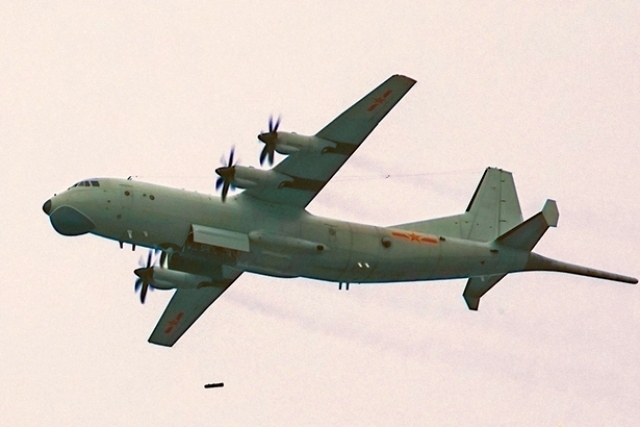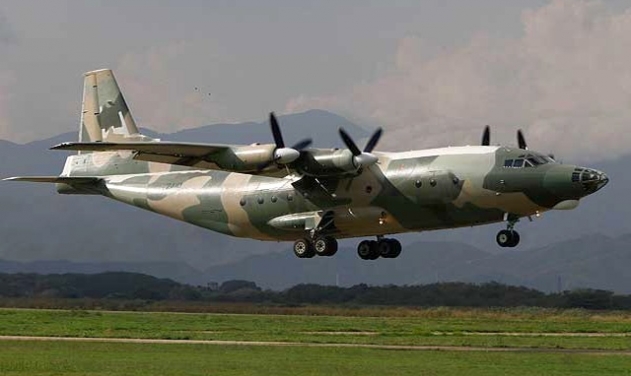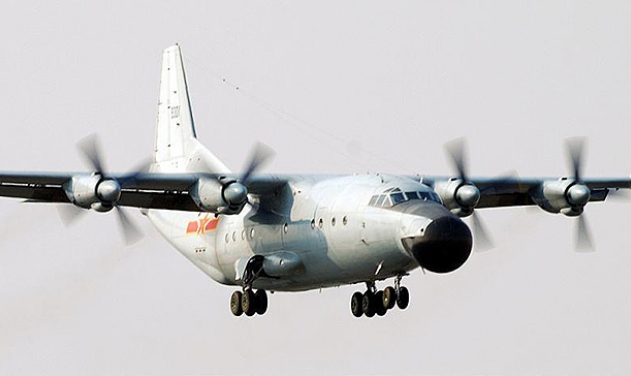Chinese Navy Demos Air-Dropped Anti-Submarine Guided Depth Charge

Chinese Navy has demonstrated a new type of guided depth charge dropped from a Y-8 anti-submarine warfare (ASW) aircraft during a recent exercise.
The combination of the Y-8 aircraft and the guided depth charge can not only detect, but also launch attacks on submarines, Chinese media reported.
During the exercises, a Y-8 ASW aircraft deployed a new type of air-droppable, self-guided depth charge from its belly, and accurately hit its intended target, according to the report and a photo attached to it.
Multiple depth charges were used in the real scenario exercises, which boosted the aircraft's anti-submarine warfare capability, the report said quoting Ordnance Industry Science Technology, a Chinese defense magazine.
In addition to submarine detection equipment, the aircraft is designed with large weapons bays that can carry torpedoes, mines and depth charges. This means that upon detecting a hostile submarine, the aircraft can proceed to directly drop a weapon of choice to attack it without requesting other warships or submarines to do so, the article said.
Compared with a torpedo, a depth charge is less powerful, but is much smaller and cheaper, the magazine said, noting that the use of this new type of depth charge, together with air-droppable torpedoes, will greatly increase the Y-8 anti-submarine warfare aircraft's combat efficiency.
The Y-8 anti-submarine warfare aircraft, which is also sometimes referred to as the Y-9, KQ-200 or GX-6 anti-submarine warfare aircraft, has been commissioned to the PLA Navy in large batches in recent years, and is of major significance in enhancing the service's anti-submarine warfare capability, the magazine said.











